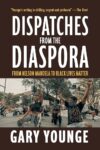
Eric Van Hoose is a doctoral student at the University of Cincinnati. He writes a monthly column for Full Stop about prisons and popular culture.
Missouri is home to just over 6 million people. Of those 6 million, 30,000 live in one of the state’s twenty-one so-called correctional institutions. One way to understand these numbers is to note that significantly more people are living in the state’s jails and prisons than in the entirety of Ferguson, Missouri (Population 21,000) — home to one of the most recent and most notable episodes of this country’s unbroken flow of racist violence.
For over a month now, the people of Ferguson have been responding to that violence. And those responses have been met in a predictable variety of ways by media and authorities. While the media frames the issue narrowly, strictly in terms of race and criminality, the authorities go about their business: there was the initial bumbling of the local police department, then the strange, cynical puppet-show appointment of Ron Johnson of the Missouri State Highway Patrol. Next came, briefly, the National Guard. A curfew was imposed, then lifted. Through all this: teargas, large-scale arrests, military grade-weaponry, armored vehicles, and police indistinguishable from soldiers.
As the upheaval in Ferguson enters the second half of September, we must also recall that this September marked the 43rd anniversary of the Attica prison rebellion/uprising — certainly also termed, like Ferguson, a “riot” not only by the status quo, but also within Wikipedia and by those determined to delegitimize any and all resistance to the kind of “law and order” that left the inmates at Attica facing such terrible conditions. Even though it might be written off and discounted by some, there’s much to learn from Attica.
The list of the demands composed by prisoners at Attica crucially includes all prisoners “throughout the united states” and its concrete specificity brilliantly highlights the violent, imperialist nature of the U.S. (“we want safe transportation to a non-imperialist country”), the continued existence of slavery (“Stop slave labor! Inmates at Attica are getting 25 cents an hour for their work”), and the lack of access to basic necessities (“We demand that all inmates be given adequate food, water, and shelter”). These demands resonate now in Ferguson and all over the country. (The entire speech, as Attica inmate L.D. Barkely delivered it, is available here.)
The parallels between how authorities worked against the Civil Rights Movement and how they are working against the people of Ferguson are already incredibly obvious, but what’s not often emphasized as we work to understand these events is the extent to which the history of the U.S. is also a history of differing methods of forced incarceration. Consider this description of the U.S. government’s response to Attica, written by Bryan Welton for Critical Resistance, which could almost be an account of Ferguson: “Then-Governor Nelson Rockefeller deployed New York State Troopers to set murderous siege on the prison. A campaign of sustained terror and repression to restore the power of guards and administrators at Attica followed.”
It is necessary, then, to understand Ferguson not only in light of the history of slavery, racism, domestic terrorism, and the militarization of everyday life, but also in light of prison life, mass incarceration, and the important history of prison resistance as exemplified by Attica. What does it mean when authorities respond to the resistance of an entire town in the same way they responded to Attica? The most obvious answer is that, from the perspective of authorities, there isn’t much of a difference between prisons and neighborhoods.
Seen this way, many aspects of Ferguson become more clear:
Why would a person walking peacefully along the street be stopped and yelled at? Why would an officer resort to murder (now eerily and euphemistically termed, as it happens often enough to warrant softening, “deadly force”) so quickly? If the officer views his role as one of control, and if he views the general population as inmates who are, in his eyes, always suspect and always locked in an antagonistic relationship with those who hold them in place, then this confrontation makes complete sense. In fact, it becomes difficult to imagine it going any other way.
Likewise, viewing Ferguson, and the entirety of the U.S., as its own kind of correctional institution elucidates some of the questions that have emerged out of the ill-informed public response to the demonstrations in Missouri: Why are people “looting,” if that’s what we want to call it? Why are people so outraged?
When neighborhoods work against the people who live in them, when citizens are under constant surveillance, impoverished, and excluded from the glamour of wealth and privilege that repeats nonstop on TV screens and in magazines, when murder by police has become commonplace, of course there’s no respect for the confining web, literal and metaphorical, made up of prisons, officers like Darren Wilson, and more translucent aspects of social life that bind people down. The overall poverty rate in Ferguson is 20%. Black people are more than three times as likely than whites to be in this situation. To wonder why people riot, people protest, and that some in Ferguson aren’t interested in upholding property rights is to also wonder why prisoners aren’t interested in building tighter, more confining, more terrible centers of incarceration.
In this view, prisons are the most idealized, crystallized form of the way we’re all already under lockdown (by schools, advertisements, politicians, employers, by ubiquitous surveillance cameras). Our jobs offer only enough to keep us dependent, our education system, at best, ensures debt and a desperate, pliable workforce. Our daily communication, private or public, is monitored. In Detroit, they’re turning off the water.
Drawing parallels between daily life in the U.S. and life in U.S. prisons risks diminishing or minimizing the misery, pain, and despair that are part of life for many inmates. That is not the intention here. Instead, following these parallels is intended to help increase our sense of community, our ability to empathize and identify with one another (through bars) and to re-establish the bonds between people that prisons so deliberately dismantle. Along with humanizing those in incarceration, we must observe how closely our social structure reflects the mechanisms of prison. The logic of our daily lives is also the logic of control and of mass incarceration, and it’s not until we become aware of how this logic permeates our daily lives that we’ll be able to do anything about it.
This post may contain affiliate links.







